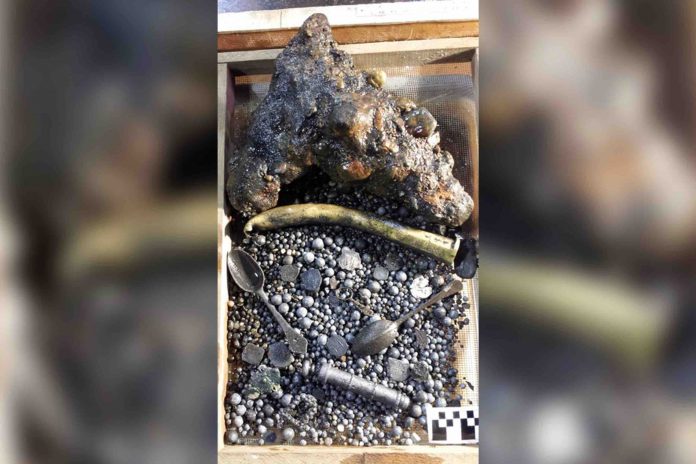At least six new pirate skeletons have been discovered from a legendary 300-year-old shipwreck off the coast of Cape Cod.
The Whydah Galley was an early 18th Century slave ship that reportedly held more than 4.5 tons of gold and silver. The Whydah was captured by Captain “Black Sam” Bellamy and his crew in February 1717, and it sank off Wellfleet during a nor’easter a few months later, killing Bellamy and others.
The shipwreck was discovered in 1984 by famed explorer Barry Clifford and his diving team, which included John F. Kennedy Jr. The ship was found loaded with the stolen treasures of 54 seized ships, and Captain “Black Sam” was inevitably listed by Forbes Magazine as the most successful pirate in history. A concretion holding the remains of the original Whydah pirate is currently on display at the Whydah Pirate Museum on Cape Cod.
The Museum said the six new skeletal remains were identified in “several large concretions,” and are currently being examined by Clifford and his team of archeologists.
“We hope that modern, cutting-edge technology will help us identify these pirates and reunite them with any descendants who could be out there,” said Clifford. “This shipwreck is very sacred ground. We know a third of the crew was of African origin and the fact they had robbed the Whydah, which was a slave ship, presents them in a whole new light. Their benevolent captain, the legendary Samuel “Black Sam” Bellamy and crew were experimenting in democracy long before the so-called civilized societies had considered such a thing.”
In 2018, Whydah team member Casey Sherman obtained Captain Bellamy’s DNA through a bloodline descendent in Devonshire, England, and had the sample tested against a human bone found in the wreck.
“That bone was identified as a human male with general ties to the Eastern Mediterranean area,” Sherman said. “These newly found skeletal remains may finally lead us to Bellamy, as we now have his DNA.”
X-Ray images of the newly-discovered bones include an entire thorax, and an upper extremity arm dislocated from the scapula.





























